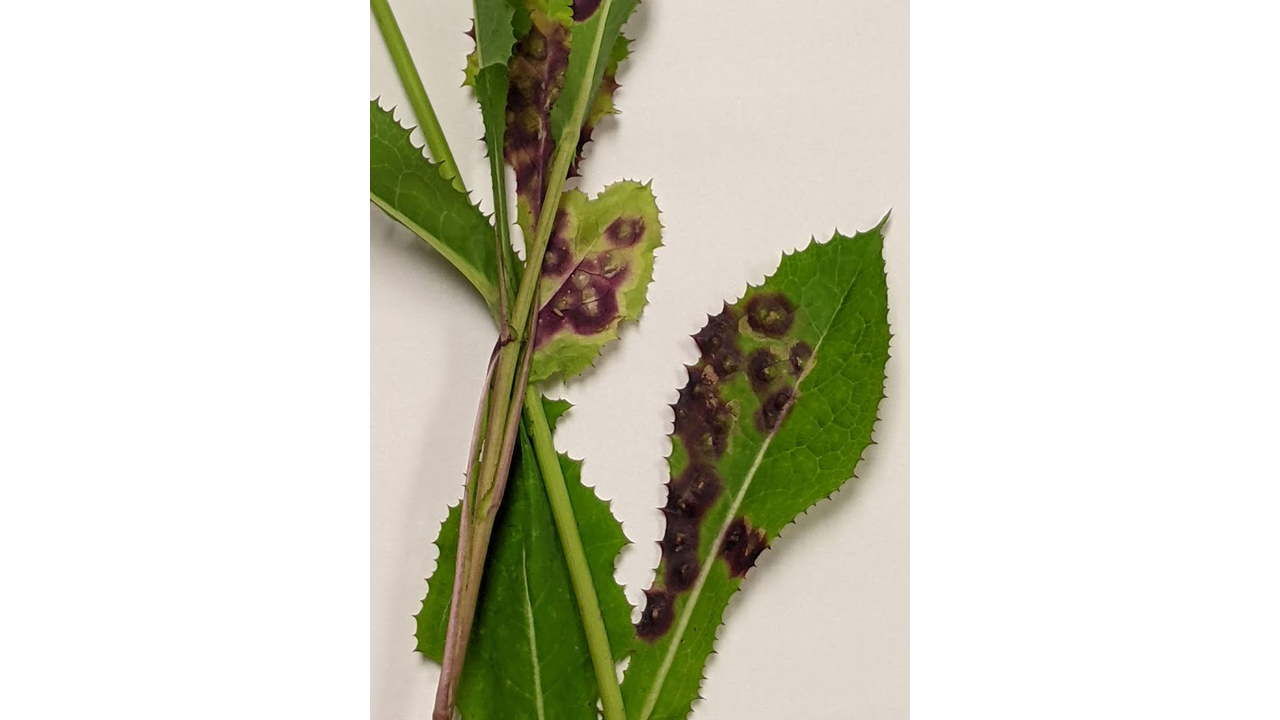
Pondera County
Agriculture and Horticulture
Published: 2022By Wendy Wedum
While the growing season of north central Montana is short, there are any number of insect, plant and environmental issues affecting home gardens and farmland with interesting problems. Aphids, weevils, potato scab, tomato end blossom rot, sunscald and winter dieback in trees were common issues.
One unique sample that arrived at the office was a sowthistle plant with purple spots on the leaves. Sowthistle blossoms look similar to dandelions but are smaller. It is an annual and perennial herb that can grow to a foot or taller. A local family was foraging for the plant and discovered plants with purple spots. MSU Extension’s Schutter Diagnostic Lab confirmed the purple spots are made by a gall-making midge, a type of fly. The midge is a beneficial insect released as a biological control agent in Canada (Alberta and Saskatchewan) to control perennial sowthistle, which can reduce crop yield and push out native plants. The gall-making midge only infests sowthistle in the Sonchus genus. The Pondera sample was not the first identified in Montana but is one of a few sites where it has been confirmed in Montana.
The Pondera office completed more than 50 nitrate tests on forage during a historic drought in Pondera County. The impacts of nitrate toxicity in cattle range from reduced appetite, lower milk production and fetal loss to rapid pulse, weakness and death in cases of acute toxicity. Identifying high nitrates with the quick nitrate test and sending a sample to a lab for accurate levels is important to make the correct recommendations to producers. Due to the extreme drought conditions experienced in Pondera County, one-third of the samples were sent to a lab for more accurate results. Lab tests range from $15 to $20 per sample but are an investment in protecting the producer’s investment to prevent loss in their cattle herds.


